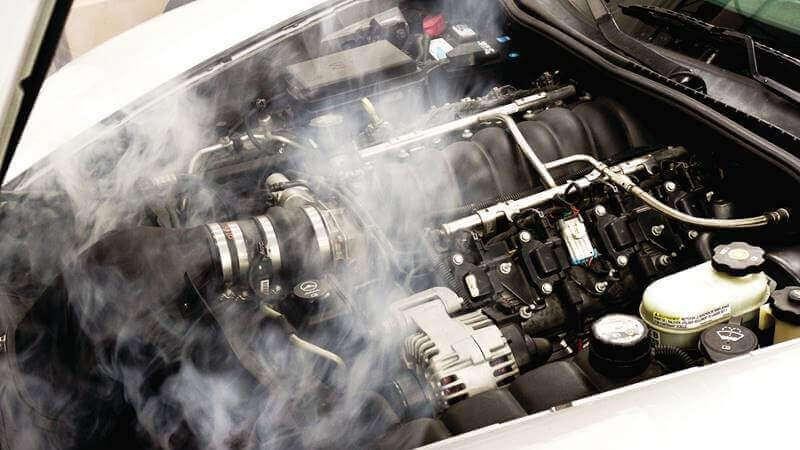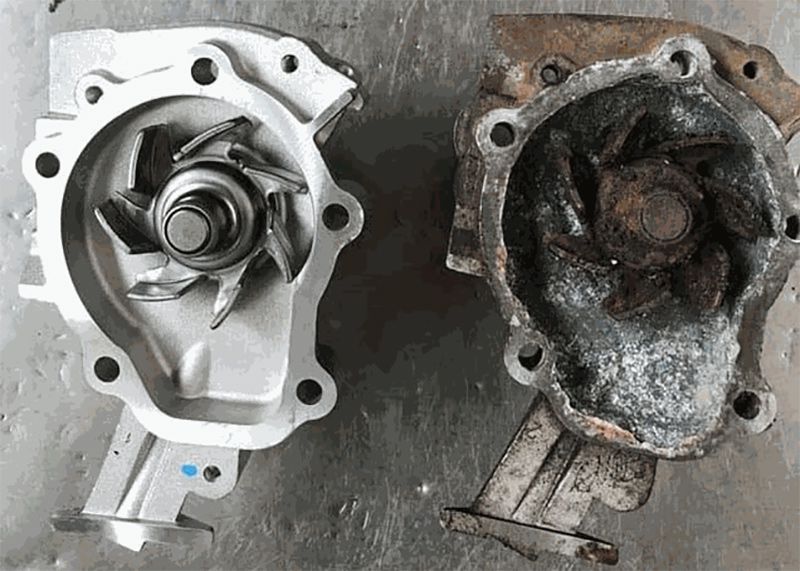Common Cooling System Problems and How to Avoid Them
The cooling system is crucial for engine protection. Common issues include overheating, corrosion, foaming, and leaks.
Using high-quality coolant like GLY COOLANT prevents these problems, ensuring engine longevity and reliability.
.jpg)
The cooling system is an essential part of a car's engine, helping to maintain the optimal temperature for stable vehicle operation. However, if not properly maintained, this system is susceptible to problems, seriously affecting the engine's lifespan. Below are common problems with the car's cooling system and how to prevent them.
1. Common Problems in the Cooling System
1.1. Overheating.

Causes of Engine Overheating
-
Insufficient Coolant:
-
Caused by leaks or neglecting regular checks.
-
-
Clogged or Dirty Radiator:
-
Build-up of deposits can restrict water flow.
-
-
Inefficient Cooling Fan or Water Pump:
-
Malfunctioning components reduce the cooling system's effectiveness.
-
Real-World Example
A car continuously driving in traffic congestion with an ineffective cooling system will quickly overheat. This issue is often indicated by a rising engine temperature gauge or visible engine smoke. If not addressed promptly, it can lead to severe engine deformation or damage.
Preventive Measures
-
Check and Refill Coolant:
Ensure adequate coolant levels before long trips. -
Periodic Radiator Cleaning:
Regularly clean the radiator to remove dirt and debris. -
Maintain Cooling System Components:
Verify that the fan and water pump are functioning properly.
1.2 Component Corrosion in the Cooling System

Causes of Component Corrosion in the Cooling System
-
Using Tap Water or Low-Quality Water:
- Replacing coolant with unsuitable water leads to mineral deposits and corrosion.
-
Neglecting Coolant Replacement:
- Failure to replace coolant as per the maintenance schedule causes additive depletion.
-
Low-Quality Coolant:
- Substandard coolant lacks anti-corrosion properties.
Real-World Example
A truck driver who used tap water instead of coolant experienced severe rusting in the radiator and pipes within a few months. This led to water leaks and a damaged water pump, incurring costly replacement expenses.
Preventive Measures
-
Use Standard Coolant:
Ensure the coolant meets quality standards and contains anti-corrosion additives. -
Replace Coolant Periodically:
Change the coolant every 1–2 years or as recommended by the manufacturer.
1.3 Foam Formation in the Cooling System
.jpg)
Causes of Foam Formation in the Cooling System
-
Air Entering the System During Coolant Replacement:
-
Air trapped in the system leads to foam formation.
-
-
Coolant Lacking Anti-Foam Properties:
-
Low-quality coolant does not prevent foam effectively.
-
Real-World Example
A passenger car experienced air bubbles in the cooling system after a coolant change, causing the engine to overheat quickly and the cooling fan to run continuously. This issue occurred due to improper air purging during maintenance.
Preventive Measures
-
Purge Air from the System:
Ensure all air is removed from the system after replacing the coolant. -
Use High-Quality Coolant:
Select coolant with effective anti-foam properties.
1.4 Coolant Leakage
.png)
Causes of Coolant Leakage
-
Aging or Damaged Gaskets and Hoses:
-
Cracks or deterioration in gaskets or hoses.
-
-
Radiator Damage:
-
Punctures or significant impact on the radiator.
-
-
Loose Hose Connections:
-
Improperly secured hose joints can result in leaks.
-
Real-World Example
A car frequently driven on long trips but not regularly checked for cooling system issues experienced coolant leakage from a hose. This led to low coolant levels and engine overheating.
Preventive Measures
-
Regular Inspections:
Check gaskets and hoses periodically and replace them at the first sign of damage. -
Secure Connections:
Ensure hose joints are tightly fastened after repairs or replacements.
2. Preventing Cooling System Issues
To keep your cooling system operating efficiently and avoid unnecessary problems, follow these steps:
-
Regular Monitoring:
-
Frequently check coolant levels and radiator condition.
-
-
Use High-Quality Coolant:
-
Select coolant with anti-corrosion, anti-foam, and excellent temperature stability additives.
-
-
Timely Coolant Replacement:
-
Adhere to the recommended maintenance schedule for optimal system protection.
-
-
Proper Maintenance Practices:
-
Purge all air from the system after replacing the coolant.
-
Comprehensive Protection with GLY COOLANT
One of the best ways to safeguard your cooling system is by choosing a high-quality engine coolant. Việt Đức proudly introduces GLY COOLANT, a premium engine coolant utilizing advanced Organic Additive Technology (OAT). This product provides comprehensive protection for your cooling system, ensuring long-lasting performance and reliability.
.jpg)
Outstanding Features of GLY COOLANT
-
Anti-Foam Properties:
-
Ensures smooth coolant flow and prevents sudden temperature spikes.
-
-
Corrosion Protection:
-
Safeguards the radiator and components from rust and damage.
-
-
Boiling Resistance:
-
Keeps the engine running stably even in high-temperature conditions.
-
-
Extends Engine Lifespan:
-
Reduces the risk of breakdowns and enhances the durability of the cooling system.
-
Advantages of OAT Additive Technology
-
Extended Lifespan:
-
Reduces coolant replacement frequency, saving maintenance costs.
-
-
Environmentally Friendly:
-
Free from harmful phosphates or silicates.
-
-
High Compatibility:
-
Can be mixed with other coolants without adverse effects.
-
Easy Identification with Distinct Colors
GLY COOLANT is available in two colors, green and red, allowing users to refill or replace without concerns about compatibility.
4. Conclusion
The cooling system plays a vital role in protecting the engine from overheating and damage. Using a high-quality coolant like GLY COOLANT effectively prevents common issues such as overheating, corrosion, and foaming.
Choose GLY COOLANT—the perfect solution to ensure your engine runs smoothly and reliably.
Product Information: https://vietducjsc.vn/nuoc-lam-mat-c19.html
Cooling system, engine protection, overheating, coolant leakage, corrosion, anti-foam, GLY COOLANT, OAT technology, radiator maintenance.
VIET DUC JOINT STOCK COMPANY
Address: No. 274 Ngo Quyen Street, Van My Ward, Ngo Quyen District, Hai Phong City.
For quotation, technical consultation on products, please contact:
Email: Sales@vietducjsc.vn
Hotline/Zalo: +84 89 669 1189 - Mr. Tony








